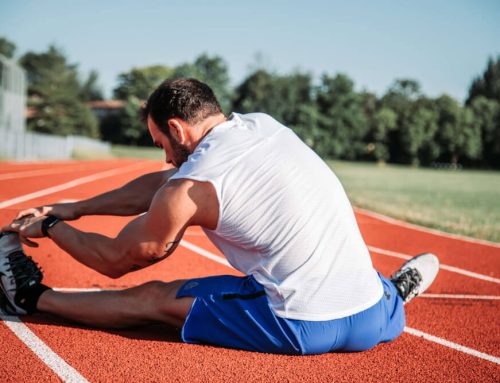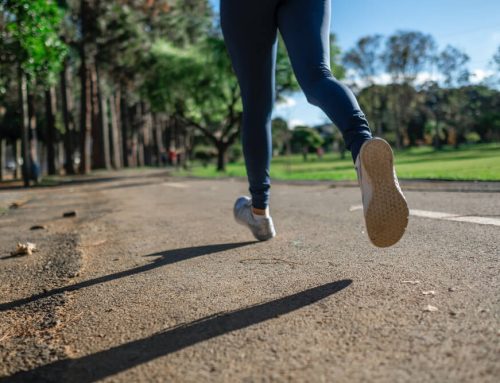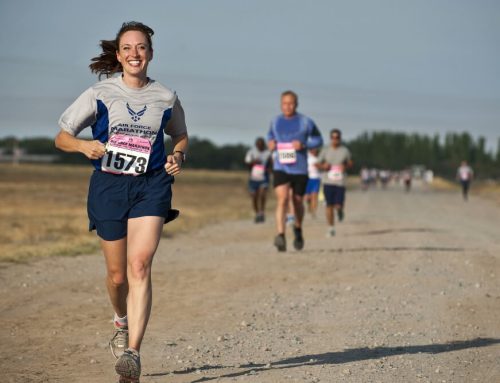Have you recently started running or just curious as to the common running injuries to watch out for?
That repetitive impact of all those foot strikes can take its toll on your muscles and joints! It’s key to remember your body may not be conditioned to certain types of running, i.e. spriting or faster sessions. However, even if you have good cardio levels, you’re asking for trouble without building a strong base.
My other post on How to prevent running injuries gives 3 main reasons injuries occur:
- Structural Imbalances. This includes having one leg shorter than another, biomechanical issues, or having weakness/imbalance in muscles.
- Volume and Speed. When an individual goes too far or too far before their body is ready to handle it. I’ve read this best summarised as “Metabolic changes vs. Structural Changes”.
- A Slip, Trip or a Fall. Whilst the other two are primarily the reason for self-care, I didn’t want to neglect that getting injured whilst out running can lead to issues where remedial is required.
The most common running injuries for runners affect (not surprisingly!) the knees, legs, and feet. Here, I’ve listed the most common running injuries to hopefully give you some insight and particular pains to be aware of.
Quick links to the most common running injuries
- Runner’s Knee
- Achilles Tendinitis
- IT Band Syndrome
- Shin Splints
- Hamstring Injuries
- Plantar Fasciitis
- Stress Fractures
- Ankle Sprain
- Other types of running injuries
1. Runner’s knee (patellofemoral syndrome)
Runner’s knee, also referred to as patellofemoral syndrome refers to pain in the front of your knee or around your kneecap. It’s a common overuse injury in sports that involve running or jumping.
It can be caused by weakness in your hips or the muscles around your knee. Runner’s knee can cause pain that:
- Is dull and can be felt in one or both knees
- Gets worse with prolonged sitting or exercise
- Gets worse when jumping, climbing stairs, or squatting
A doctor can often diagnosis runner’s knee with a physical exam. A physio can give you a specific treatment plan to treat a runner’s knee injury.
2. Achilles tendinitis
Achilles tendinitis is the inflammation of the tendon that connects your calf muscle to your heel. It’s likely to happen after increasing your mileage or the intensity of your running. For me though, it was riding an ill-fitting bike then go straight into a quick run 😛
The pain will make it difficult to run but the more you do you’ll increase your risk of rupturing your Achilles tendon. If this tendon is torn, it usually requires surgery to repair it.
Common symptoms can include:
- Dull pain in your lower leg above your heel
- Swelling along your Achilles tendon
- Limited range of motion when flexing your foot toward your shin
- A warm feeling over the tendon
In my experience, I had targeted pain in the Achilles when trying to run on it or walk-up stairs. My recovery was 6 weeks (no running), where I started to stretch pain free from 4 weeks. I was able to ride and swim during this time though to keep fitness and training for upcoming events. It’s a hard balance to strike as the muscle needs to repair but stretching/impact can help the process (working the scare tissue), once you’re over the initial pain period.
3. IT band syndrome
The iliotibial (IT) band. This is a long piece of connective tissue that runs from your outer hip to your knee. The IT band helps stabilize your knee when you’re walking or running.
IT band syndrome is caused by repetitive friction of the IT band rubbing against your leg bone. It’s very common in runners due to tight IT bands. Weak gluteal muscles, abdominals, or hips may also contribute to this condition.
IT band syndrome causes sharp pain on the outer side of your leg, usually just above your knee. Your IT band may also be tender to the touch. The pain often gets worse when you bend your knee.
Through sports massages, foam rolling and a good stretching routine you can minimize the risk of this injury 💪
4. Shin splints
Shin splints refer to pain that occurs in the front of the inner parts of your lower legs, along your shinbone. This injury can happen when you increase your running volume too quickly, especially when running on hard surfaces.
In most cases, shin splints aren’t serious and go away with rest. However, if left untreated, they can develop into stress fractures.
Symptoms of shin splints can include:
- A dull pain along the front or inner part of your shinbone
- Pain that gets worse when you exercise
- Tenderness to the touch
- Mild swelling
They will often get better with rest or by cutting back on how frequently or how far you run. I’ve also heard people cite compression socks help!
5. Hamstring injuries
From my experience, I’ve written a post about the hammy’s here so I’ll save repeating myself.
However, If you have a hamstring injury, you may experience:
- A dull pain in the back of your upper leg
- A hamstring muscle that’s tender to the touch
- Weakness and stiffness in your hamstring
6. Plantar fasciitis
The most common foot injury, Plantar fasciitis! It comes from irritation or degeneration of the thick layer of tissue, called fascia, on the bottom of your foot. I recommend calf stretches and rolling your foot on a golf ball to alleviate the pain.
This layer of tissue acts as a spring when you’re running. Increasing your running volume too quickly can put your fascia under increased stress. Muscle tightness or weaknesses in your calves can also put you at risk of plantar fasciitis. Symptoms typically include:
- Pain under your heel or midfoot
- Pain that develops gradually
- A cold, burning or tingling sensation on the bottom of your foot
7. Stress fractures
Stress fracture’s for runners can occur in a few places, due to repetitive stress or impact. It’s a hairline crack that forms in your bone, more commonly at the top of the foot, or in the heel or lower leg.
An X-ray is needed for them to diagnose a stress fracture so best head to the doctors 🙂
This injury can be pretty serious, putting you out for 8 weeks, requiring the use of crutches and/or a cast!
8. Ankle sprain
Ankle sprains often happen when you land on the outer part of your foot and roll your ankle over. You’re more likely to feel this one straight away! Watch out for pain, swelling, bruising and a limited range of motion! You most likely will need to do the walk of shame home or ring for a pick-up 😎.
Ankle sprains usually improve with rest, self-care, or physical therapy.
Other common running injuries
I could go on for longer but here’s some others to watch out for 😀
- Ingrowing toenails
- Bursitis
- Meniscal tear
- Anterior compartment syndrome.
- Calf strain.
Treatment options for common running injuries
Always take caution if you experience any pain or discomfort during or after a run.
It’s well worth reflecting on your training, have you increased your mileage too quickly or pushed your body too much recently?
It’s well worth getting a second opinion if it’s painful to run or walk, so you can apply the most appropriate course of action. Remember, you want to come back stronger! 💪
Finally, there is a lot of advice out there so do your research!
From reducing mileage, stretching more, applying RICE (rest, ice, compression, elevation), taking anti-inflammatories and/or seeking support from a physiotherapist.






